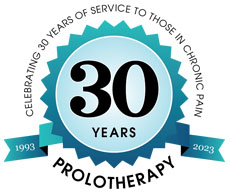Many people with face and/or mouth pain have been chasing the cause of their symptoms for years. They begin to realize that their chase is nowhere near the endpoint because they are suffering from worsening symptoms and continue to receive ineffective treatments. One of the ways to document this “missing diagnosis” is through use of a motion x-ray test.
What is a motion x-ray? Well, it is what it sounds like! It is a moving picture x-ray that looks at the cervical (neck) curve as well as any instability, or looseness, of the cervical spine segments during real-life, symptom-causing movements. The amount of overhang between the segments demonstrates the degree of cervical spine instability. We have been blessed to utilize this motion technology in our Caring Medical office for a number of years now and have found it to be a vital tool in helping to diagnose patients with seemingly odd or unrelated symptoms.
So how does this relate to patients with face or mouth pain? The upper cervical area of C1, C2, C3 is where the important nerves that control the motion of the tongue as well as sensations of the mouth are located. When movement of the upper spine becomes unstable, the bones can pinch on nerves, veins, and other vital structures that run through the neck. Think about when you have dental work. You are hyperextended while sitting in the dental chair for long periods of time during procedures such as wisdom teeth removal, crowns, or even just a cleaning or a cavity filling. This can also occur at the salon when you are hyperextended over the hair washing bowl. Another place it occurs is during a surgical procedure, where you are hyperextended on the table during the procedure. Could the positioning during the procedure cause some upper cervical instability which, in turn, leads to face or mouth pain? We have found this to be the case in many people, especially who claim their symptoms began or worsened significantly after one of these events.
Once the cause is determined, treatment to re-stabilize the spinal segment connectors (ligaments), as well as postural work and spinal curve correction can be individualized based on the findings of the motion x-ray and physical exam. In many cases, this is an important step in finally reaching an endpoint to suffering from face, tongue, and burning mouth syndrome.




